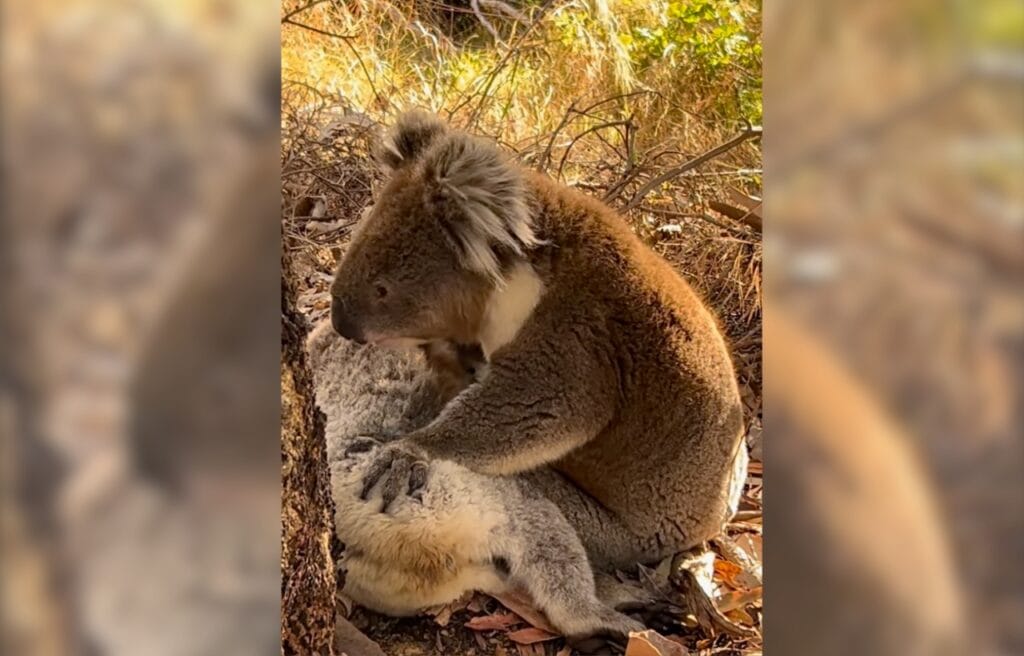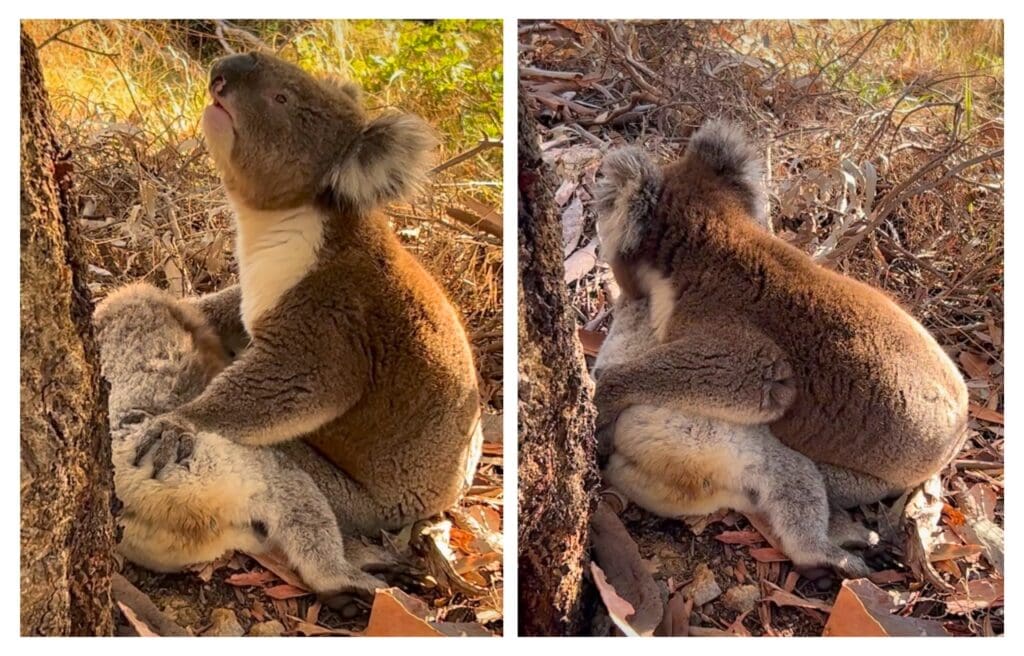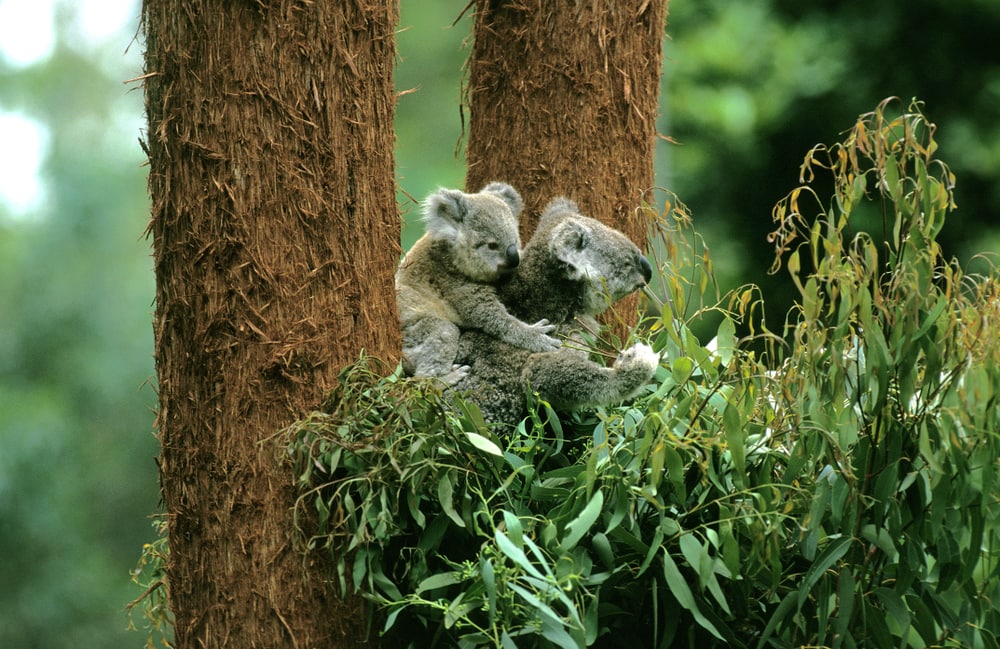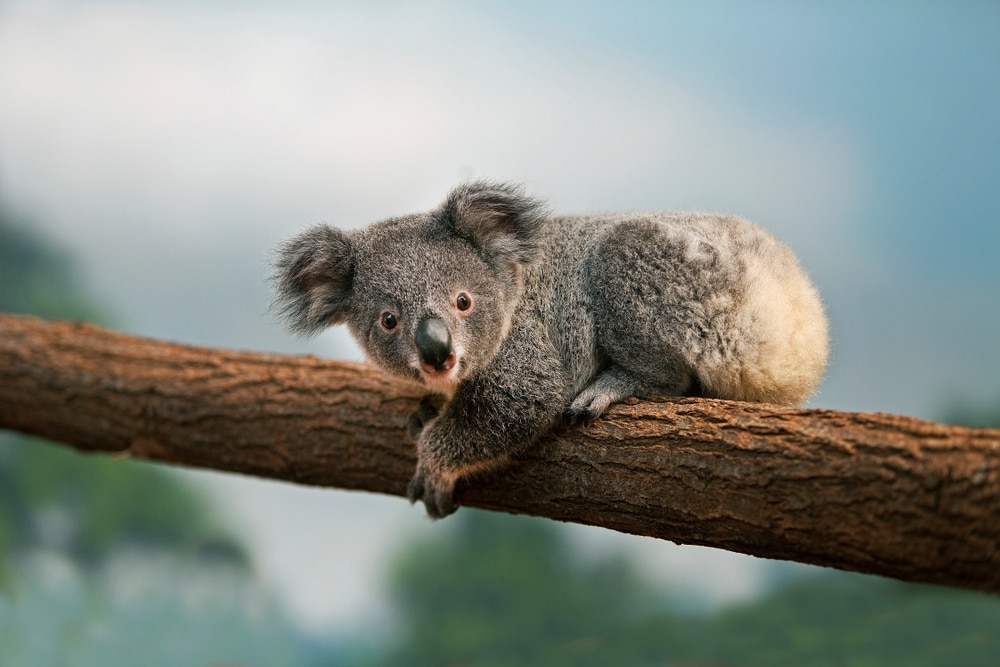The Adelaide Hills witnessed a touching scene recently, as a koala’s reaction to loss captivated and moved wildlife lovers across social media.
A Rare Glimpse

Emergency responders from Koala Rescue were called to an area after a local resident reported a male koala holding a deceased female at the base of a tree—a simple yet impactful testament to the depth of their social bonds.
“This type of behavior is rarely witnessed by our rescuers, but it shows that koalas might have a rich emotional life that we’re still learning about,” a Koala Rescue spokesperson told Yahoo News Australia.
An Outpouring of Empathy
The footage touched many Australians, prompting an outpouring of support online. Comments on social media reflect a widespread sense of compassion, with many users expressing their concern for the well-being of the surviving koala.
“It’s truly heartbreaking to see him like that,” shared a Facebook user in reaction to the video posted by Koala Rescue. “Animals absolutely know when they lose their loved ones.”
A Mystery Surrounding Loss

While the male koala’s vigil has captured hearts, the circumstances surrounding the female’s death remain a mystery.
Hartley, the rescuer from Koala Rescue, attended to both koalas, ensuring the male was healthy before releasing him into the wild near the site of the incident. “There were no signs of illness or injury,” Hartley told Yahoo News Australia, which only deepens the enigma of her passing.
Local residents who had grown familiar with the pair noted that they had been spotted in the vicinity for an extended period.
“They might have been a mating pair, which is intriguing because males typically move on after mating,” Hartley added. “What happened here is unusual and, frankly, quite mystifying.”
Speculation has arisen that the two may have been engaged in a mating ritual in the canopy when a tragic accident occurred.
Though it’s only one of several theories, Hartley emphasizes that without concrete evidence, they “just don’t know” the exact cause of the tragedy.
Understanding Koalas

Koalas are unique marsupials native to Australia, known for their solitary nature and distinctive, teddy bear-like appearance.
They spend most of their time in eucalyptus trees, which provide both food and shelter. A koala’s diet consists almost entirely of eucalyptus leaves, which are tough and fibrous and require a lot of chewing to break down.
Socially, koalas are generally solitary animals, with males having a home range that overlaps with several females, but they tend to avoid direct contact with each other outside of breeding season.
The extraordinary behavior observed in the male koala, therefore, offers a rare and heartbreaking look into the emotional capacity of these animals during times of loss and mourning.
Koalas Through Time

Over the last century, koalas have faced multiple threats. In the early 20th century, koalas were hunted for their fur, leading to a drastic drop in their numbers. Since then, conservation measures have helped their populations rebound in some areas.
Nevertheless, koalas are now facing new challenges that threaten their survival, including habitat destruction, climate change, and disease.
Conservationists are working tirelessly to address these threats and ensure that koalas can thrive in their natural habitat for generations.
Join the Conservation Effort

The poignant story of the koala’s vigil for its companion shines a spotlight on the broader plight faced by these animals.
Everyone can play a part in koala conservation. If you’re interested in helping, here’s what you can do:
- Educate Yourself and Others – Learn more about koalas and share your knowledge with friends and family. Awareness is the first step towards action.
- Support Habitat Restoration – Join or donate to organizations working to restore the natural bushland and eucalyptus forests that koalas call home.
- Be a Responsible Pet Owner – Keep dogs on leashes in koala habitats to prevent attacks.
- Become a Citizen Scientist – Participate in local koala conservation projects, such as surveying populations or planting eucalyptus trees.
By understanding more about koalas, acknowledging their historical struggles, and getting involved in conservation efforts, we can all contribute to a brighter future for these iconic Australian marsupials.
Remember, each action—no matter how small—counts towards safeguarding the future of koalas.
If you spot a koala or any other wildlife in distress, don’t hesitate to reach out to your local wildlife rescue organization. Together, we can make a significant difference in the lives of these unique animals.






